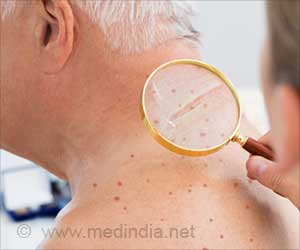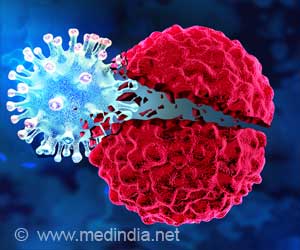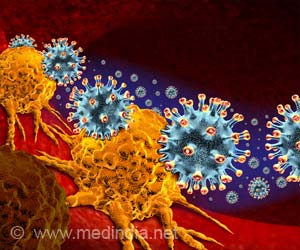Three sisters received the results of a test which determined whether they were carriers of a mutated gene that could have up to an 80 per cent chance of developing breast cancer.
Last year in September three sisters Julie Owen, Pam Dugmore and Rosemary Moss at the Birmingham Women's Hospital received the results of a test which determined whether they were carriers of a mutated gene that could have up to an 80 per cent chance of developing breast cancer.
The results revealed that Pam, who is 50, and Julie, 45 carried the mutated gene. Only Rosemary, 64, did not. The sisters were advised to undergo a double mastectomy because of their high risk so as to decrease the likelihood of breast cancer.There had already been a tragic series of breast cancer cases in the family. One sister, Jennifer, had died from cancer in 1997 and another, Dawn, was in remission. Their grandmother, mother and an aunt on their father's side had all died from the disease.
Around fifteen per cent of breast cancer cases are said to be hereditary. 5 per cent of that has been found to be caused by one of two gene mutations, BRCA1 and BRCA2 that were identified in 1994. There is a 50 per cent chance of the gene being passed from one generation to the next, and affects men as well. The gene causes six per cent of all breast cancers in men, and 16 per cent of all prostate cancers.
When Dawn Fellowes, 47, the women’s sister was diagnosed with breast cancer in 2003, she underwent an immediate lumpectomy and her lymph glands were removed. She said, "I was left with one-and-a-half breasts. They cut the tumor out from the top half of my left breast, leaving a large dent. But at that time I didn't care what they looked like. I just wanted to be cancer free. Two weeks after surgery, they told me I had a particularly aggressive grade-three cancer and that that they had also found it in my lymph glands. The doctor drew a line with life at one end and death at the other. She put me a centimeter from death. That was the worst moment. My son was four years old."
Following six months of chemotherapy and radiotherapy, Dawn's cancer was in remission. However she was offered genetic counseling and a gene test to find out whether she carried the mutated gene.
Dawn said, "Naively, my understanding was that if I was positive, I would just have to be extra vigilant about cancer screenings. I felt such a responsibility for [my family]. If I tested positive, then the implications were huge. Everybody would need to be tested. My sisters, their sons and daughters, the lot."
Advertisement
It took her eighteen months to get the results because of the periodic long delays that NHS diagnostic services are often subject to She learnt that she carried the BRCA2 gene, which meant her risk of developing cancer again was 80 per cent.
Advertisement
Mehboob Ali, the consultant plastic surgeon at Russell's Hall Hospital, who operated on Dawn said, "Since 2002, we have been doing more mastectomies with immediate reconstruction. Once they have had a mastectomy it is not cancer that affects women, it's the loss of their breasts. Every time they see their flat chest they are reminded of the cancer. Patients who have reconstruction appear to make a better recovery."
Two weeks after Dawn's positive result Julie and Pam were told that a double mastectomy was their only real option. Having the operation would lower their risk to that of the general population - one in nine.
The three sisters were booked in for their operation within four weeks of one another in June this year. In each instance the breast tissue would be removed and a temporary saline balloon inserted under the chest muscle so that the skin around the breast is prevented from shrinking.
The next stage is the rebuilding of the breast using a silicone implant, or fat from the back or abdomen tunneled underneath the skin to the chest. The latter procedure, an autologous reconstruction, meant the breasts would look and feel more natural. Nipples are removed because they contain ducts that may have cancer cells. A new nipple is tattooed on at a later stage.
Julie went first. She said, "I was told that for the first couple of days after the operation I would be thinking, 'What have I done?' But there was none of that. My boobs are better then they were before. They're fuller, although they don't feel the same. It's the same sensation as touching cotton wool, they don't feel like a part of me."
Dawn went in next. Surgeons used fat from her stomach to rebuild her breasts and therefore she was also given a tummy tuck. The last to go was Pam. Her operation also passed without incident and was a success.
The outcome was positive for all three women. Although they must still have yearly screenings, the removal of their breast tissue that 80-per-cent risk factor is no longer an issue.
In spite of all this, Julie was devastated when her 29-year-old daughter, Jenny, was found to have the mutated gene. She will undergo a double mastectomy in January. Julie says: "I feel guilty, which I know is not rational. But it is my fault. I passed it on to her. "Julie's youngest daughter and Dawn's son are still too young to be tested. They must wait until they are 25.
However what anyone with the dreaded gene mutation may face under the surgeon's knife is considerably better than biding time, awaiting an almost certain diagnosis of cancer.
Source-Medindia
NLA










